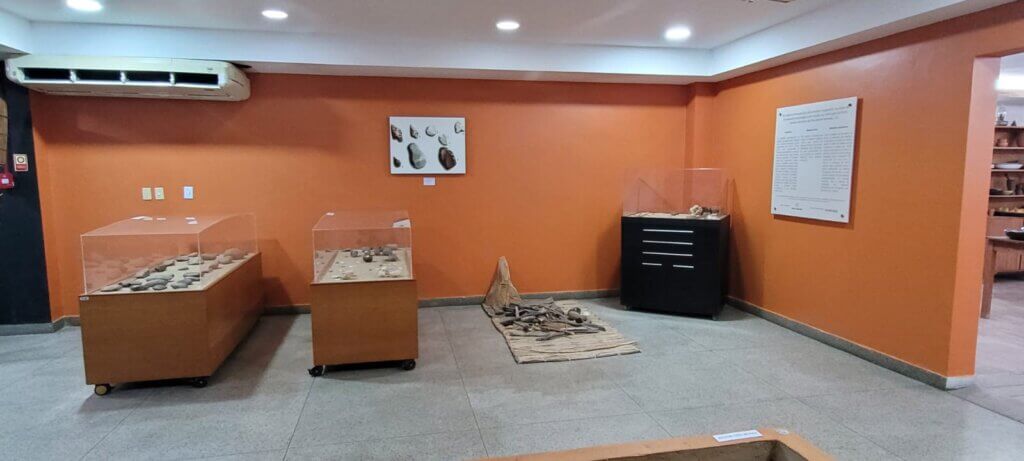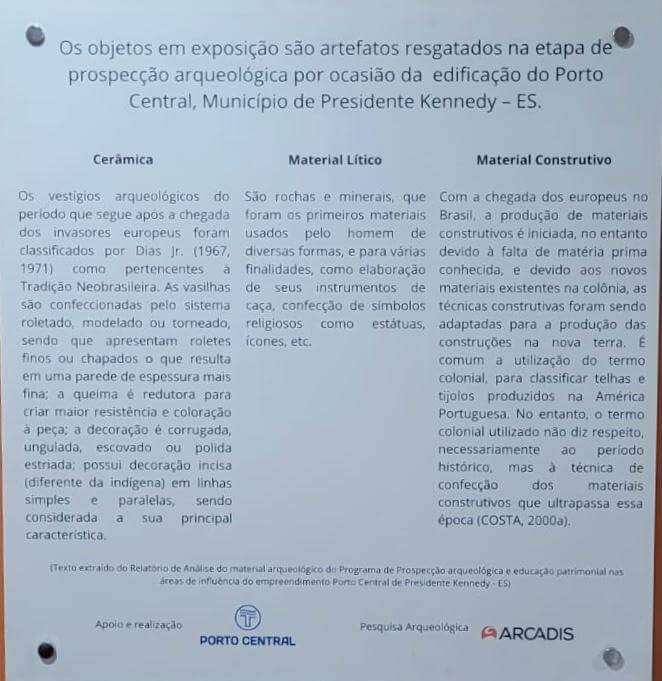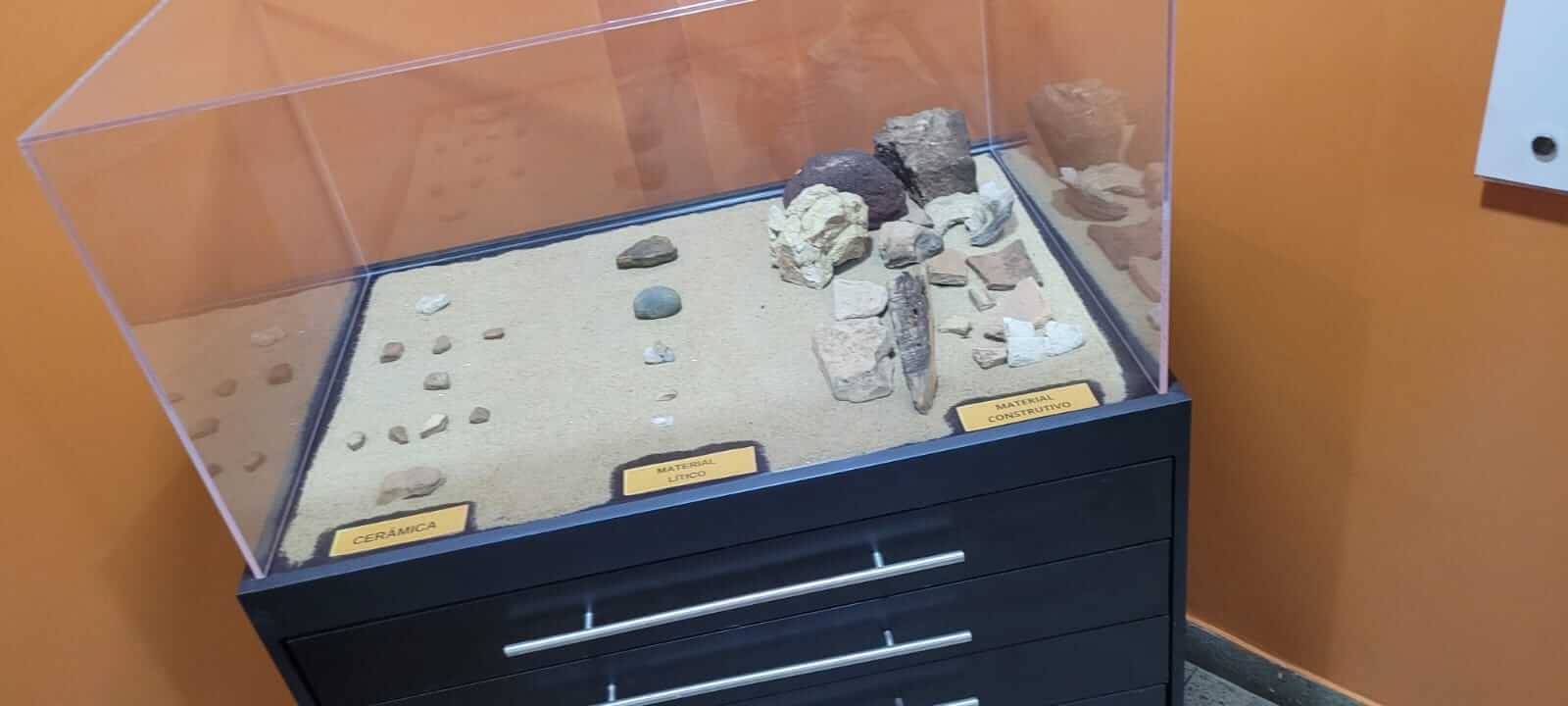Material collected during archaeological prospecting becomes part of a permanent exhibition at the Center for Science, Education and Culture of the City of Vitória
Historical materials found during archaeological prospecting carried out by Porto Central now are part of a permanent exhibition in the museum of the Center for Science, Education and Culture of the City of Vitória. The exhibition opened this month of January. The research that resulted in the collection of items, carried out in the areas of influence of the port, consisted of one of the steps required by the public authorities in this pre-installation phase of the company, in Presidente Kennedy, South Coast of Espírito Santo.
Bricks, tiles and a block of burnt clay, possibly dating back to the colonial period, were found near the Nossa Senhora das Neves Church, an important historical sanctuary. The collection was donated and delivered by Porto Central to the capital's institution, aiming at the heritage, historical and cultural education of the Espírito Santo population, contextualizing the pieces with the past of the region of Presidente Kennedy.
The information is compiled in the Porto Central Archaeological Prospecting and Heritage Education Program, in compliance with IBAMA's environmental conditions in the project's environmental licenses.

Telling the story of Espírito Santo
The materials on display at the museum are yet another wealth that helps tell the story of Espírito Santo, says Ticiana Pivetta Costa, reference professor at the School of Science, Biology and History, an entity that forms part of the Center for Science, Education and Culture of Vitória .
The site, located in the Mário Cyprestes neighborhood, in the Sambão do Povo complex, in Vitória, welcomes free visits to the general population. Its main audience is groups from teaching and educational institutions, including children from pre-school to undergraduate (university), master's and doctoral students, as well as families and other groups.
“Porto Central provided us with the storage of the material. There are five museum spaces. Each space has a different theme to address. We are a non-formal education space. On the first floor, where the museum space of historical sites is located, we talk about Espírito Santo's historical cultural heritage. Through the representation of archaeological sites, we were able to talk about the entire prehistory movement in Espírito Santo and also placing emphasis on the historical phase”, highlights Ticiana.
By land and sea
In addition to the terrestrial research, carried out in an area of around 2 thousand hectares between 2015 and 2017, underwater maritime archaeological prospecting was also carried out in 2019.
34 units of material were collected and became part of the exhibition: 15 pieces of construction material (3 bricks and 12 fragments of tile), a block of burnt clay (1), wood (11) and six items of mineral origin (three fragments of quartz, two sandstone blocks and a polished pebble).
The curatorship of the material collected during the prospecting followed a sequence of procedures to safeguard the items, with organization of the pieces, cleaning, sorting and recording the inventory number and origin on the piece itself with a pen and India ink (marking). In a second moment, the materials were analyzed and, subsequently, they were packaged, a stage that preceded the museumization.
“These are very relevant findings for heritage education. The delivery of this material for public exhibition is part of this process and which requires the musealization (entry into a museum space) of the collection, aiming to protect and enhance the historical and cultural heritage associated with the prospected archaeological site”, explains Sueli Passoni.


